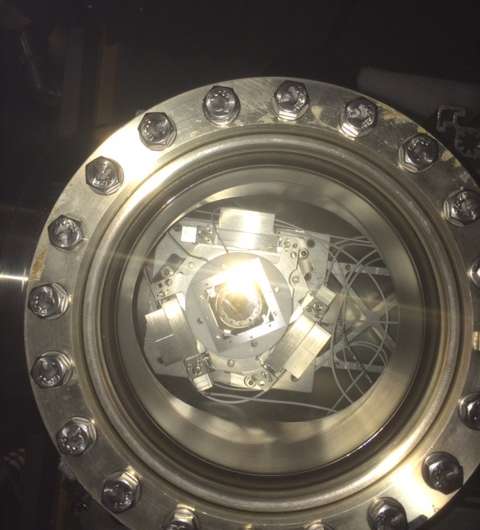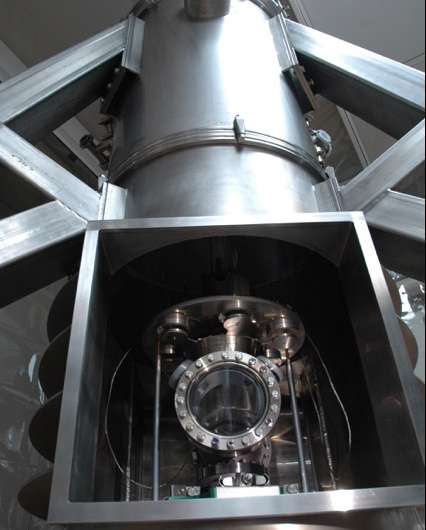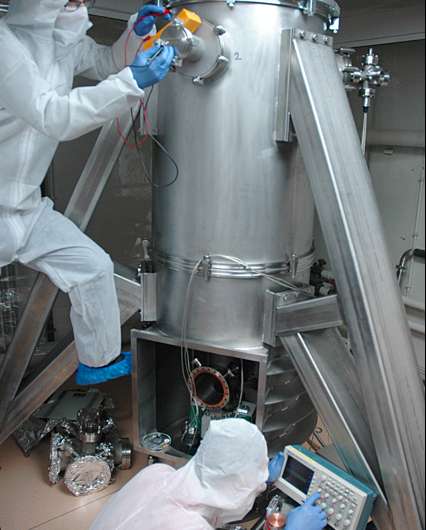A first step towards testing dark energy theories on the table top

Scientists from FOM and the VU University Amsterdam have designed an experiment to test a popular candidate theory that could explain the mechanisms behind dark energy. Now, they have reached an important milestone on the long road they have been following for the past four years: a working dark energy force detector. The first few tests with this new device give confidence that the sensitivity required to put the theory to the test can indeed be reached in the setup.
Dark energy
Physicists know that the expansion of the universe accelerates, but no one knows what the driving force behind this acceleration is. Although the mechanisms of the force remain unknown, physicists have given it a name: dark energy. Calculations show that about 70 percent of the total mass in the universe must be contributed to this mysterious energy, which we can neither see nor measure in any direct way.
One of the intriguing facts about dark energy is that it seems to act with enormous force over the vast empty spaces in our universe - pushing space apart, while not having any measurable effect on the scale of planets or even the solar system. This adaptive nature of dark energy has motivated the theoreticians Justin Khoury and Amanda Weltman to formulate the so-called 'chameleon' model in 2004. They suggested that the main actor of dark energy is a particle which interacts strongly in a high vacuum, while being screened in 'denser' environments such as on Earth or even in the Milky Way.

Several experiments have tried to test the chameleon model in various ways, but none of them has yet reached the required sensitivity that could falsify the theory.
A new approach - the Cannex setup
In 2010, the researchers worked in an international team to come up with a method to detect chameleon interactions. Their setup consists of two parallel plates. If the density of the medium between these plates changes, there should be a change in the strength of the chameleon interactions, and thus either a reduction or an increase in the measured force between the plates.

Overcoming numerous technical challenges, the researchers have designed and built the setup, and dubbed it the 'Casimir and non-Newtonian force experiment' (Cannex). A recent first test of the force sensor revealed that the detector can indeed reach the required sensitivity to measure chameleon interactions. In other words, Cannex will soon be able to completely rule out or prove the existence of chameleon interactions, and thereby help solve the dark energy puzzle.
Seismometer
Moreover, Cannex is not just a machine for fundamental physics. It is also a prime example of how technical developments can be used for valorisation. Making a virtue out of the susceptibility of the force sensor to vibrations, the researchers developed a highly sensitive seismometer. This was done with the help of a FOM valorisation grant. This effort has led to a patent application and is currently in the final prototyping stage.
More information: Force sensor for chameleon and Casimir force experiments with parallel-plate configuration, Phys. Rev. D 91, 102002 – Published 7 May 2015 . dx.doi.org/10.1103/PhysRevD.91.102002 . On Arxiv: xxx.tau.ac.il/abs/1505.01763
Journal information: arXiv
Provided by Fundamental Research on Matter (FOM)





















